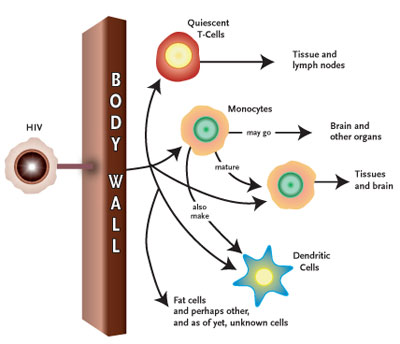|
Ditanex-100 Tablets
Warning
PANCREATITIS, WHICH HAS BEEN
FATAL IN SOME CASES, HAS
OCCURRED DURING
THERAPY WITH DIDANOSINE.
DIDANOSINE USE SHOULD BE
SUSPENDED IN PATIENTS
WITH SIGNS OR SYMPTOMS OF
PANCREATITIS AND DISCONTINUED IN
PATIENTS
WITH CONFIRMED PANCREATITIS (SEE
WARNINGS AND PRECAUTIONS).
LACTIC
ACIDOSIS AND SEVERE HEPATOMEGALY
WITH STEATOSIS INCLUDING FATAL
CASES
HAVE BEEN REPORTED WITH THE USE
OF ANTIRETROVIRAL NUCLEOSIDE
ANALOGUES ALONE OR IN
COMBINATION, INCLUDING
DIDANOSINE
Composition
Each
chewable tablet contains:
Didanosine 100 mg
Description
Didanosine (formerly called
dideoxyinosine-ddI) is a
synthetic purine nucleoside
analogue of the naturally
occurring nucleoside
deoxyadenosine, in which the 3''
hydroxyl group is replaced by
hydrogen. Intracellularly,
didanosine is converted by
cellular enzymes to the active
metabolite, dideoxyadenosine
5''-triphosphate. This
metabolite inhibits the activity
of HIV-1 reverse transcriptase
both by competing with the
natural substrate, and by its
incorporation into viral DNA.
The lack of a 3''-hydroxyl group
in the incorporated nucleoside
analogue prevents DNA chain
elongation and therefore, the
viral DNA growth is terminated.

Indications
Ditanex-100 is
indicated for the treatment of
HIV infection when
antiretroviral
therapy is warranted.
Dosage and Administration
Adults: Dosage:
The dosing interval should be 12
hours. Didanosine should be
administered on an empty
stomach, at least 30 minutes
before or 2 hours after eating.
Adult patients should take 2
tablets at each dose so that
adequate buffering is provided
to prevent gastric acid
degradation of didanosine. No
more than 4 tablets should be
taken at each dose to reduce the
risk of gastrointestinal side
effects. The recommended
starting dose in adults is
dependent on weight, as outlined
in the table below:
Administration: For full
therapeutic effect, 2 tablets
must be thoroughly chewed,
crushed or dispersed in water
before swallowing. The tablets
should not be swallowed whole.
To disperse the tablets, 2
tablets should be added to 2
tablespoons (30 ml) of water.
The water should then be
stirred until a uniform
dispersion forms. The entire
dispersion should be swallowed
immediately.
Dose Adjustment:
Clinical signs suggestive of
pancreatitis should prompt dose
suspension and careful
evaluation of the possibility of
pancreatitis. Didanosine use
should be discontinued in
patients with confirmed
pancreatitis.
Patients who have presented with
symptoms of neuropathy may
tolerate a reduced dose of
didanosine after resolution of
these symptoms upon drug
discontinuation.
In adult patients with impaired
renal function, the dose of
didanosine should be adjusted to
compensate for the slower rate
of elimination. The recommended
doses and dosing intervals of
didanosine in adult patients
with renal insufficiency are
given in the table below:
Table 2: Recommended
dose (mg) of
didanosine by body
weight
|
Creatinine
Clearance (mL/min)
|
|
|
|
|
|
|
|
|
|
|
|
|
|
|
|
|
|
|
|
|
|
|
|
Patients requiring continuous
ambulatory peritoneal dialysis (CAPD)
or hemodialysis: It is
recommended that one-fourth of
the total daily dose of
didanosine be administered once
a day (See Table 2, recommended
dosage for patients with CLCR <
10 mL/min). It is not necessary
to administer a supplemental
dose of didanosine following
hemodialysis.
PAEDIATRICS
Dosage: The recommended
dose is 120 mg/m2 twice daily.
Didanosine should be
administered on an empty
stomach, 30 minutes before or 2
hours after food. Tablets should
be crushed, chewed or dispersed
in water, as described for
adults. Use at least 2 tablets
per dose to provide adequate
buffering. Maximum 4 tablets per
dose.
Contraindications
Ditanex-100 is
contraindicated in patients with
previously demonstrated
clinically significant
hypersensitivity to any of the
components of the formulation.
Presentation:
Ditanex-100
Container pack of 60 tablets
|
